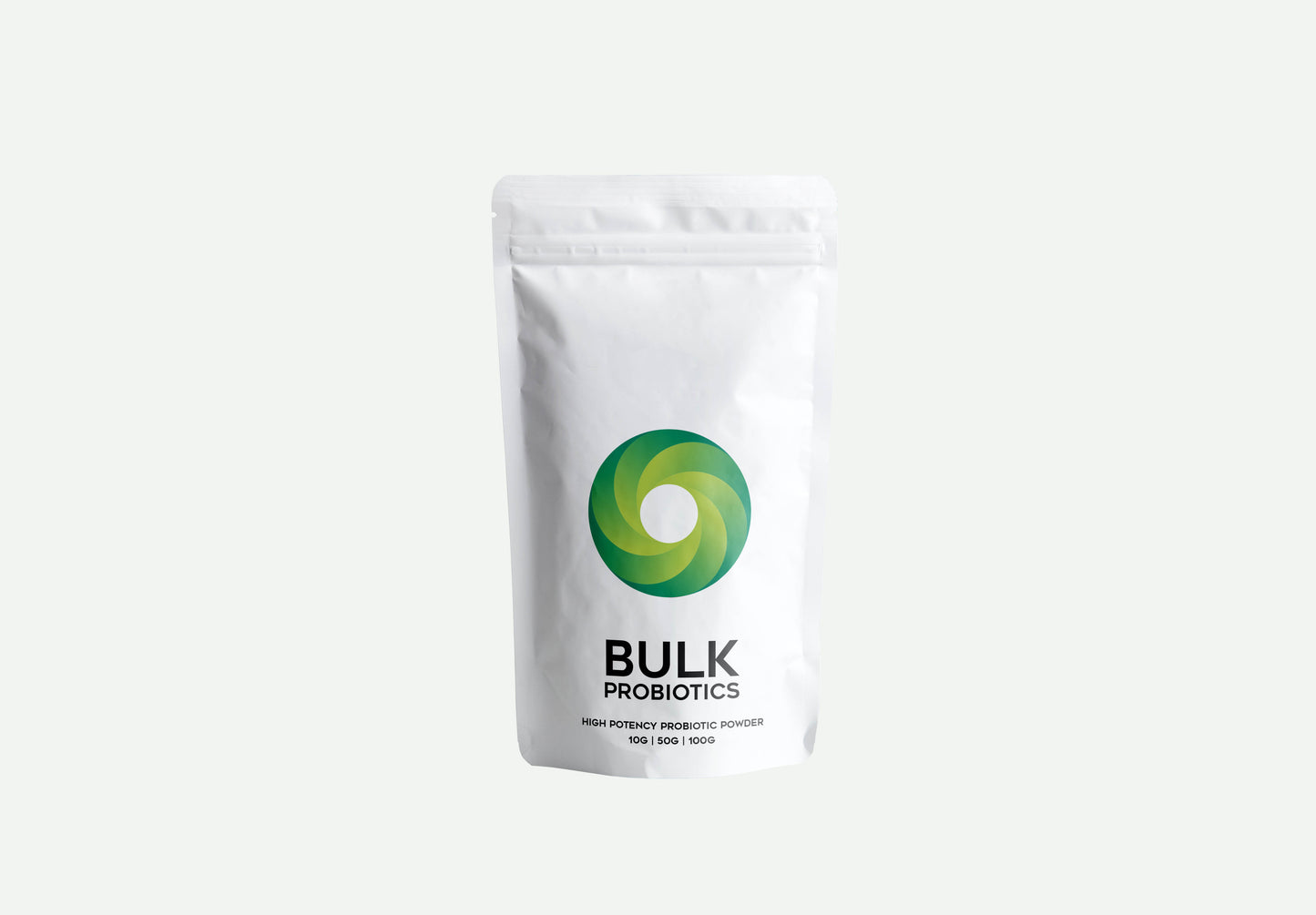B. Animalis Probiotic Powder 500 billion CFUs/gram (Live Probiotic, No Fillers)
Histamine Free
Ingredients: Bifidobacteriuim Animalis (B. Animalis)
NOTE: Keep refrigerated upon arrival.
The probiotics are freeze dried so no ice packs, etc are needed during shipment.
DO NOT purchase no filler probiotic powder if it is NOT refrigerated. Fillers like maltodextrin, etc keep probiotics stable outside of the refrigerator but cause a lot of digestive problems so we don't use them. The CFU count will be much lower than advertised for no filler powders that are not refrigerated.
We keep all our powders in the refrigerator before shipment.
FREE US SHIPPING.
*Free international shipping over $100 USD (use code FREESHIPPING at checkout).
How do I measure this?
Two measuring spoons are included. The small spoon is 50 Billion CFU (0.1g) and the big spoon is 400 Billion CFU (0.8g).
Why powder and not capsules?
Our probiotic powder has no additives. Many people don't realize that a lot of additives worsen their symptoms. Additionally, the microbiome in your mouth, esophagus, and stomach are incredibly important to your health. Taking our flavorless probiotic powder keeps those areas healthy.
Why High Potency? How much should I take?
Using a dose less than 25 Billion per day will have limited health benefits -- you will need a higher potency to get desirable results. Many people have used other probiotic brands with minimal results because of their low potency.
It depends on the person and the issue that is being addressed. You’ll start to see results at a minimum of 25 Billion CFUs per day. The average daily dose by our customers is between 200-400 Billion CFUs per day. Some people see significant results with dosages as high as 800 Billion CFUs per day.
10g Size ($2.99 per gram):
100 servings if using 50 Billion CFU serving size
50g Size ($1.97 per gram)
6,000 servings if using 5 Billion CFU serving size (~1/256 teaspoon or 15.625mg)
3,000 servings if using 10 Billion CFU serving size (~1/128 teaspoon or 31.25mg)
1,500 servings if using 20 Billion CFU serving size (~1/64 teaspoon or 62.5mg)
750 servings if using 40 Billion CFU serving size (~1/32 teaspoon or 125mg)
400 servings if using 75 Billion CFU serving size (1/16 teaspoon or 0.25g)
200 servings if using 150 Billion CFU serving size (1/8 teaspoon or 0.5g)
100 servings if using 300 Billion CFU serving size (1/4 teaspoon or 1g)
100g Size ($1.57 per gram):
12,000 servings if using 5 Billion CFU serving size (~1/256 teaspoon or 15.625mg)
6,000 servings if using 10 Billion CFU serving size (~1/128 teaspoon or 31.25mg)
3,000 servings if using 20 Billion CFU serving size (~1/64 teaspoon or 62.5mg)
1,500 servings if using 40 Billion CFU serving size (~1/32 teaspoon or 125mg)
800 servings if using 75 Billion CFU serving size (1/16 teaspoon or 0.25g)
400 servings if using 150 Billion CFU serving size (1/8 teaspoon or 0.5g)
200 servings if using 300 Billion CFU serving size (1/4 teaspoon or 1g)
Statement on Allergens
Dairy Free
Sugar Free
Gluten Free
Preservative Free
Soy Free
GMO Free
Yeast Free
Casein Free
Free of Artificial Colors or Flavors
Prebiotic Free
How long will a 50 gram or 100 gram powder last?
50 grams will last about 2 months if you take 200 Billion CFUs per day or 8 months if you take 50 Billion CFUs per day. 100 grams will last about 4 months if you take 200 Billion CFUs per day.
Can infants and children take probiotics?
Based on existing research, infants can start taking probiotics at 6 months of age.
How much probiotics can an infant take?
Infants can take up to 50 Billion CFU per day.
What are CFUs?
CFU stands for Colony Forming Unit. This is the bacterial count of probiotics.
Why aren’t BulkProbiotics enteric coated?
Enteric coated probiotics are mainly a marketing gimmick. The strains that are used at BulkProbiotics are vetted to have excellent acid and bile tolerance as well as the capacity to survive intestinal transit.
What happens if I leave the probiotics outside of the refrigerator for a couple of days?
2 year temperature stability testing has been performed on our probiotics and the loss would be negligible. Our probiotics can remain at room temperature (or travel) for 5 weeks with limited loss, however, it is best to store the probiotics in the refrigerator for optimum potency.
Why do some individuals get a “die-off” reaction?
This is due to a ‘war’ that occurs between the probiotics and the bad bacteria in your body. If there is a large imbalance in your gut bacteria, the die-off reaction will be higher. To avoid this we recommend that you gradually increase your dosage starting with about 25 Billion CFU per day and increase every few days over a couple of weeks.
Do your probiotics contain any dairy or gluten?
Our probiotics are dairy and gluten free. They do not utilize milk, milk derivatives, GOS, or Inulin as additional ingredients in the fermentation media.
When should I take probiotics? Is it ok to take probiotics with drugs, vitamins, or antibiotics?
As a digestive aid, it is best to take 30 minutes before a meal; otherwise, it is also ok to take on an empty stomach in the morning or at bedtime (at least 2 hours after eating). Probiotics should not be taken with antibiotics (take 2 hours before or after taking antibiotics).
What is the return policy?
We accept returns within 30 days for all 10g probiotic powders that are unopened. We do not accept returns for any other sizes. The 10g size is available to experiment to help you find the right probiotic strains for you.
*These statements have not been evaluated by the Food and Drug Administration.
*These products are not intended to diagnose, treat, cure, or prevent any disease.















